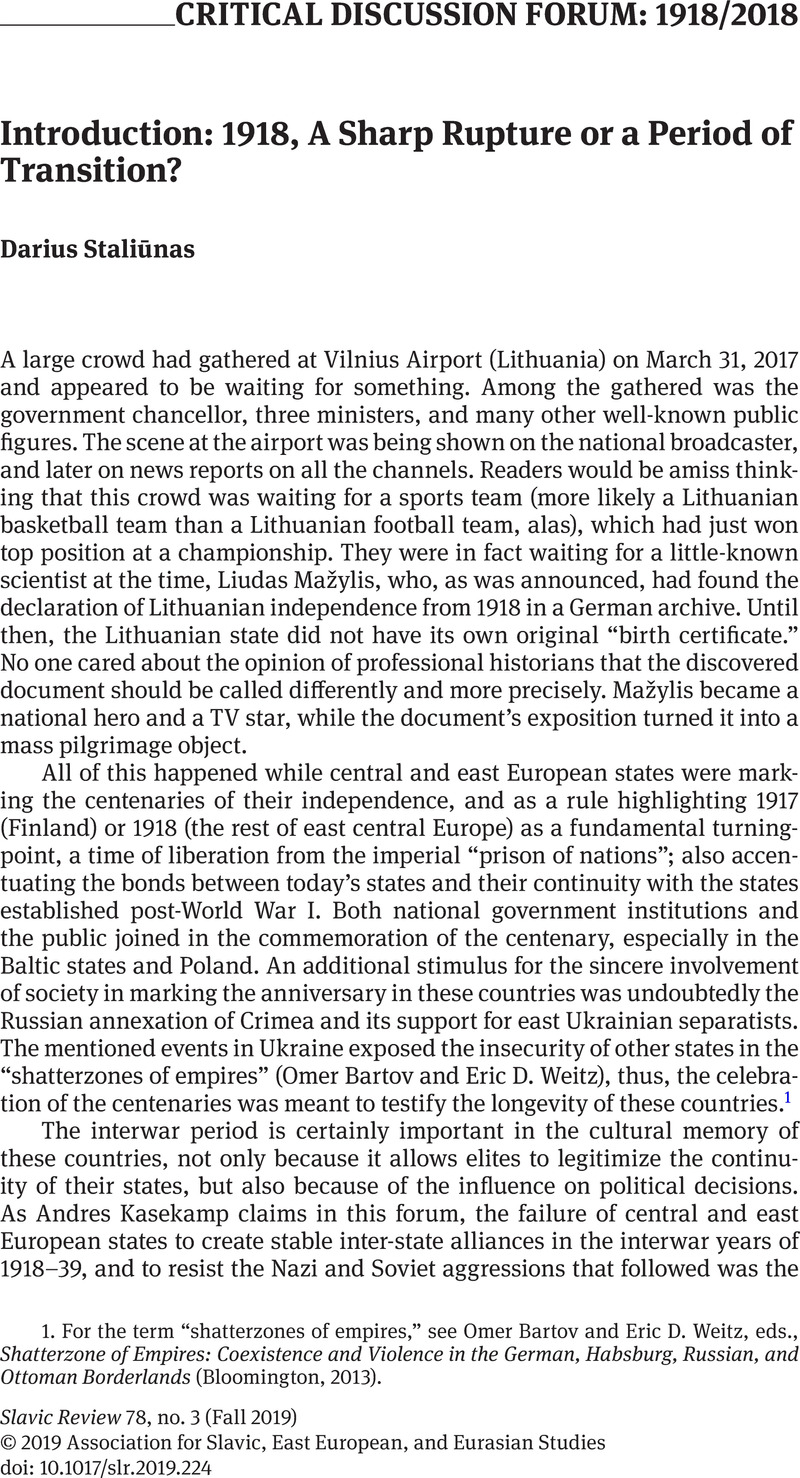No CrossRef data available.
Article contents
Introduction: 1918, A Sharp Rupture or a Period of Transition?
Published online by Cambridge University Press: 06 November 2019
Abstract

- Type
- Critical Discussion Forum: 1918/2018
- Information
- Copyright
- Copyright © Association for Slavic, East European, and Eurasian Studies 2019
References
1 For the term “shatterzones of empires,” see Bartov, Omer and Weitz, Eric D., eds., Shatterzone of Empires: Coexistence and Violence in the German, Habsburg, Russian, and Ottoman Borderlands (Bloomington, 2013)Google Scholar.
2 Sirutavičius, Vladas and Staliūnas, Darius, eds., A Pragmatic Alliance: Jewish-Lithuanian Political Cooperation at the Beginning of the 20th Century (Budapest, 2011)Google Scholar.
3 See Michael Miller later in this cluster, (7). Change page number in Miller to match.
4 Judson, Pieter M., The Habsburg Empire: A New History (Cambridge, Mass., 2016)CrossRefGoogle Scholar; Ther, Philipp, “Czechosłowacja jako państwo pohabsburskie. Rozważania o ciągłości dziejów przed i po 1918 roku,” Kwartalnik Historyczny 125, no. 2 (2018): 529–37CrossRefGoogle Scholar.
5 Osterhammel, Jürgen, The Transformation of the World: A Global History of the Nineteenth Century (Princeton, 2014), 392Google Scholar.
6 Judson, The Habsburg Empire, 521.


